Abstract
Bradykinin elicits relaxation of isolated transverse rings of canine coronary, celiac, superior mesenteric, renal, splenic, pulmonary, gastric, and femoral arteries. After endothelial cells of the vessel wall are removed by rubbing of the intimal surface, canine arteries fail to relax upon addition of bradykinin. The endothelium-dependent relaxation of canine arteries remains intact after treatment with cyclooxygenase inhibitors (indomethacin and flurbiprofen), and this argues against mediation by prostaglandins. When they are stimulated with bradykinin, endothelial cells of canine arteries appear to release a substance mediating vascular smooth muscle relaxation. In contrast, preparations of arteries of cats (superior mesenteric) and rabbits (superior mesenteric and celiac) may be rubbed on the intimal surface without a consistent loss of sensitivity to the relaxing effects of bradykinin. In addition, relaxation of the cat and rabbit arteries is completely blocked by cyclooxygenase inhibitors. Preliminary studies indicate that bradykinin relaxes human arteries in an endothelium-dependent manner and that this effect is not mediated by prostaglandins. We have previously reported that arteries of all species tested require the presence of endothelial cells for relaxation in response to acetylcholine and we have also demonstrated, using the rabbit aorta, that this effect is mediated by the release of an uncharacterized substance from these cells that relaxes vascular smooth muscle. We conclude that bradykinin relaxes canine and human arteries via a similar mechanism but that it relaxes cat and rabbit arteries by stimulating release of prostaglandins from as yet undefined cell types.
Full text
PDF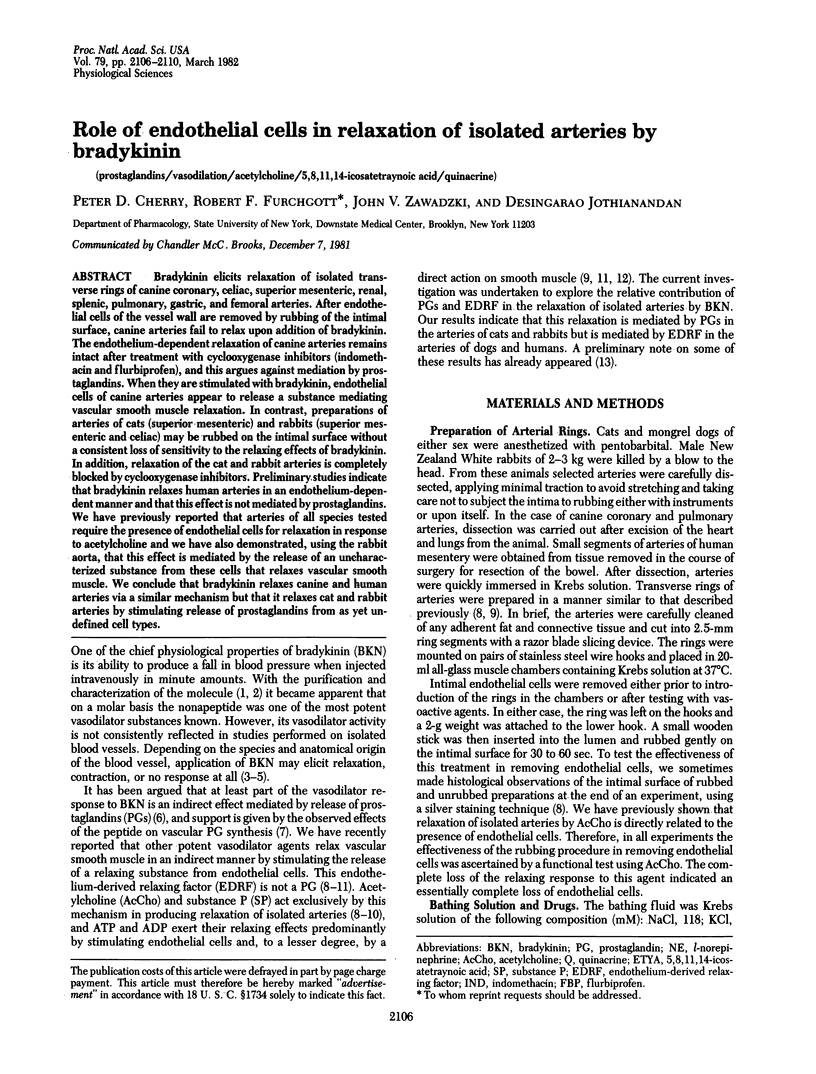
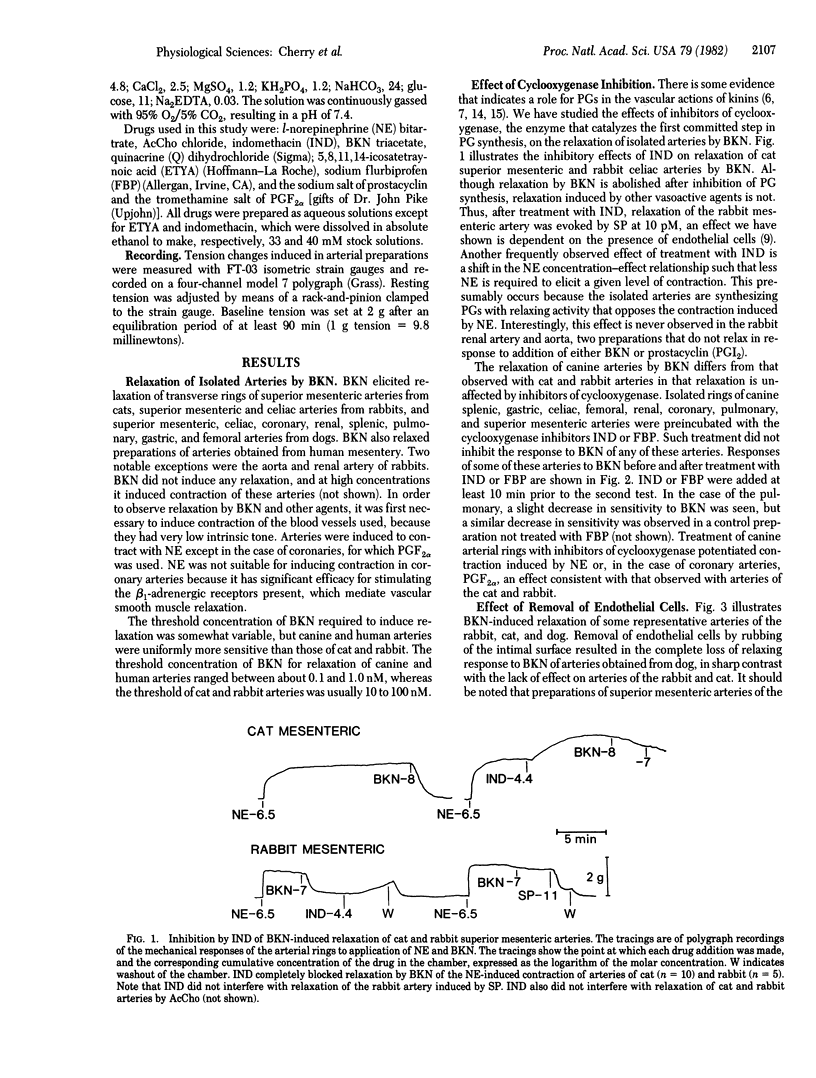
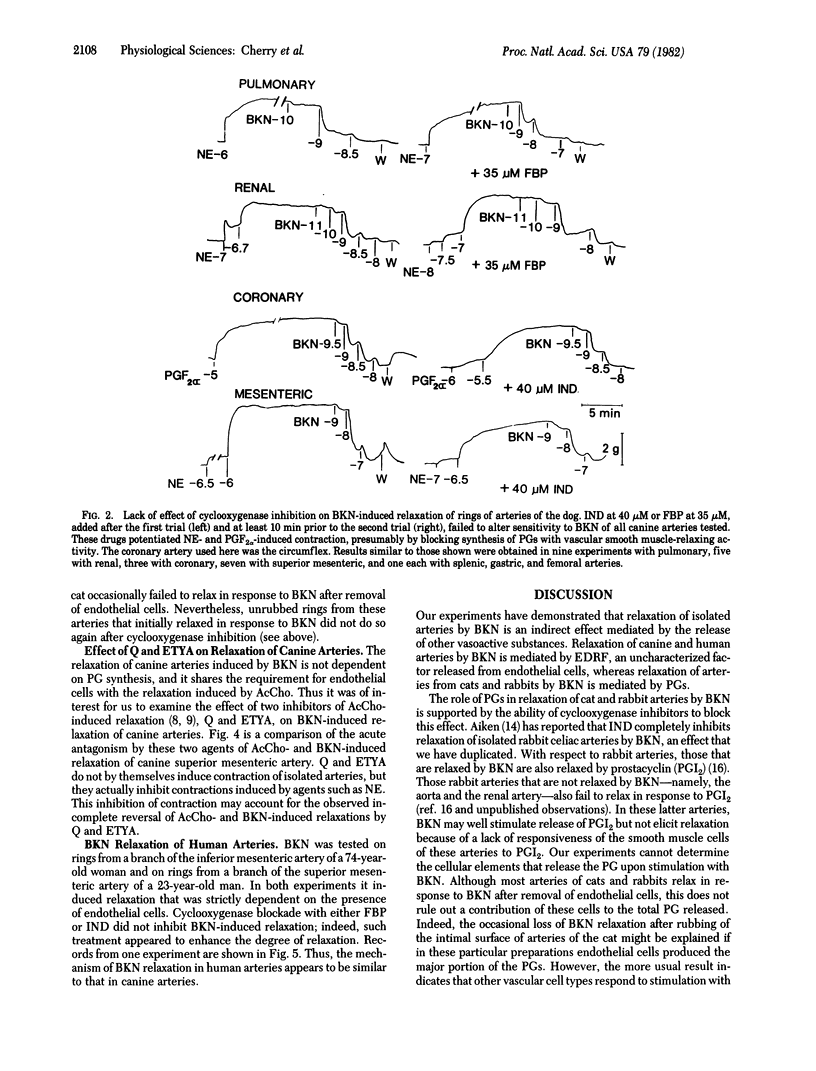
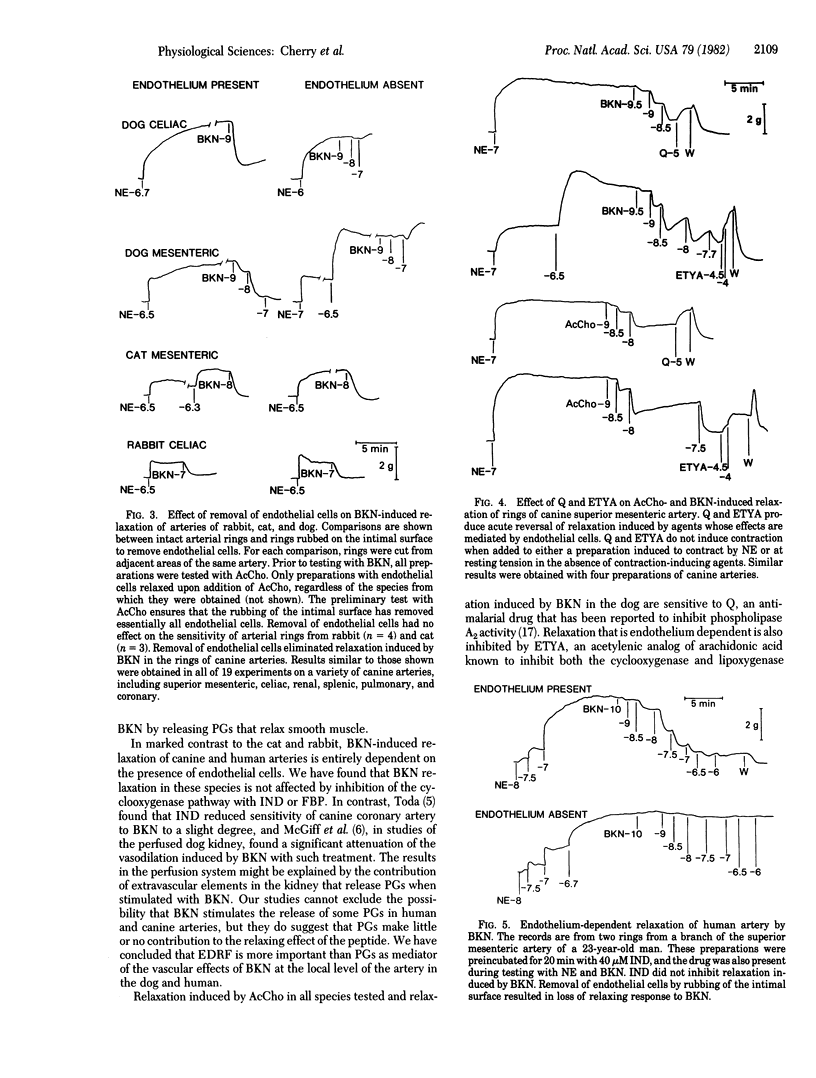
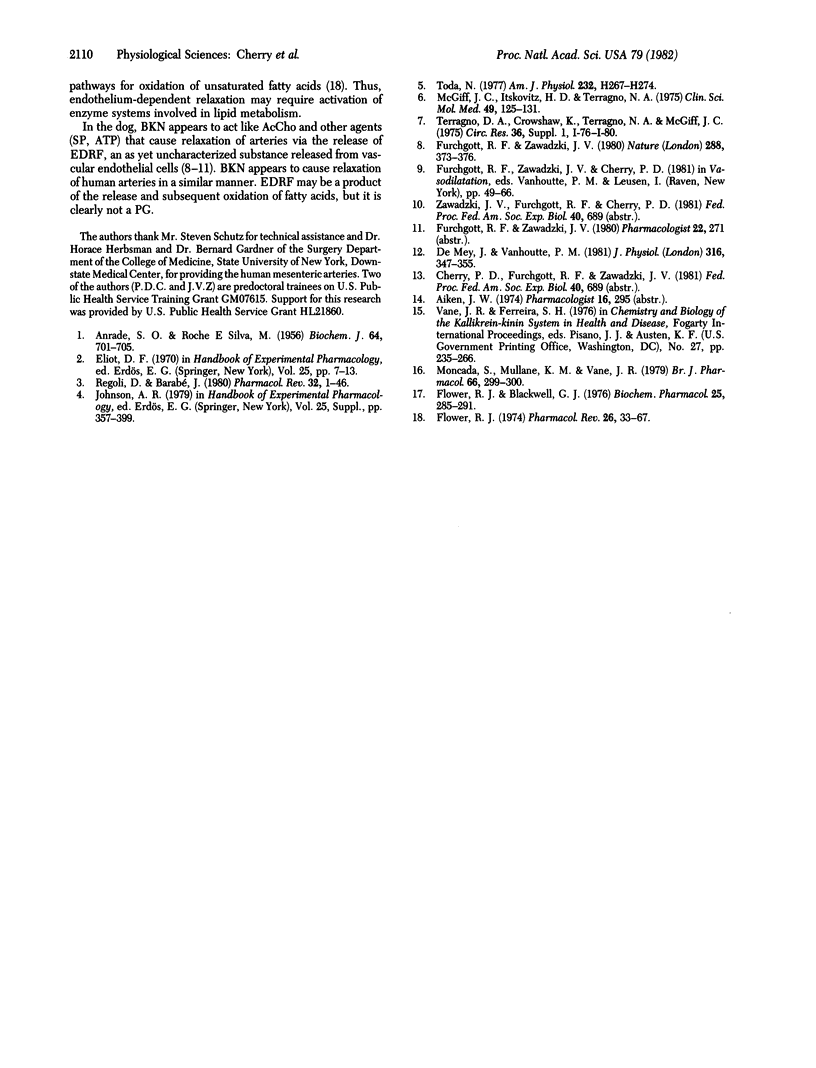
Selected References
These references are in PubMed. This may not be the complete list of references from this article.
- ANDRADE S. O., SILVA M. R. Purification of bradykinin by ion-exchange chromatography. Biochem J. 1956 Dec;64(4):701–705. doi: 10.1042/bj0640701. [DOI] [PMC free article] [PubMed] [Google Scholar]
- De Mey J. G., Vanhoutte P. M. Role of the intima in cholinergic and purinergic relaxation of isolated canine femoral arteries. J Physiol. 1981 Jul;316:347–355. doi: 10.1113/jphysiol.1981.sp013792. [DOI] [PMC free article] [PubMed] [Google Scholar]
- Flower R. J., Blackwell G. J. The importance of phospholipase-A2 in prostaglandin biosynthesis. Biochem Pharmacol. 1976 Feb 1;25(3):285–291. doi: 10.1016/0006-2952(76)90216-1. [DOI] [PubMed] [Google Scholar]
- Flower R. J. Drugs which inhibit prostaglandin biosynthesis. Pharmacol Rev. 1974 Mar;26(1):33–67. [PubMed] [Google Scholar]
- Furchgott R. F., Zawadzki J. V. The obligatory role of endothelial cells in the relaxation of arterial smooth muscle by acetylcholine. Nature. 1980 Nov 27;288(5789):373–376. doi: 10.1038/288373a0. [DOI] [PubMed] [Google Scholar]
- McGiff J. C., Itskovitz H. D., Terragno N. A. The actions of bradykinin and eledoisin in the canine isolated kidney: relationships to prostaglandins. Clin Sci Mol Med. 1975 Aug;49(2):125–131. doi: 10.1042/cs0490125. [DOI] [PubMed] [Google Scholar]
- Regoli D., Barabé J. Pharmacology of bradykinin and related kinins. Pharmacol Rev. 1980 Mar;32(1):1–46. [PubMed] [Google Scholar]
- Terragno D. A., Crowshaw K., Terragno N. A., McGiff J. C. Prostaglandin synthesis by bovine mesenteric arteries and veins. Circ Res. 1975 Jun;36(6 Suppl 1):76–80. doi: 10.1161/01.res.36.6.76. [DOI] [PubMed] [Google Scholar]
- Toda N. Actions of bradykinin on isolated cerebral and peripheral arteries. Am J Physiol. 1977 Mar;232(3):H267–H274. doi: 10.1152/ajpheart.1977.232.3.H267. [DOI] [PubMed] [Google Scholar]


